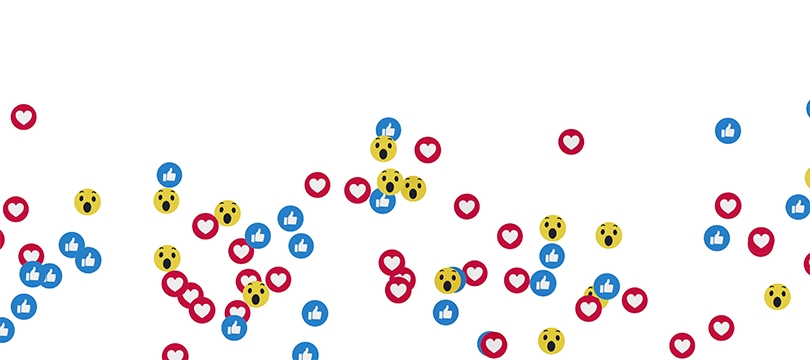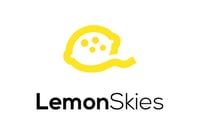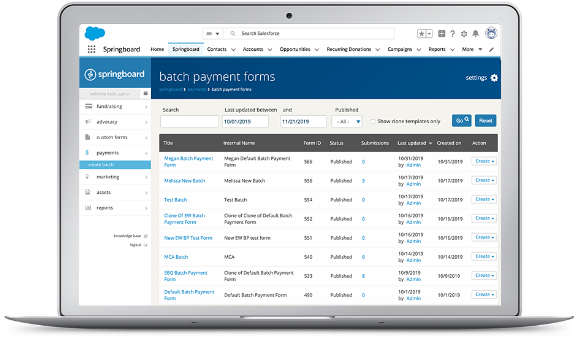Like a Wrecking Ball: Facebook Birthday Fundraisers

 This is a guest contribution by our smart friend Olga Moshinsky Woltman of LemonSkies. It’s the first of a two-part series on the recent impact of Facebook on fundraising in the social sector.
This is a guest contribution by our smart friend Olga Moshinsky Woltman of LemonSkies. It’s the first of a two-part series on the recent impact of Facebook on fundraising in the social sector.
Fundraising via Facebook is a big deal. Circa 2015, we used to occasionally post an appeal with a link to a form (gasp), with no expectations for meaningful revenue. The Facebook donate button was a nice addition, but we carried on, focusing on our email segmentation plans. And then in August 2017, like Miley on her ball and chain, birthday fundraisers arrived to disrupt our fundraising lives.
On November 14, 2018, a couple weeks before #GivingTuesday, Facebook announced that Facebook users collectively raised over $1 billion for nonprofit and personal causes. Did I mention that they do not charge charities payment processing fees?
Giving promotions on Facebook do generate donations, but let’s be real: The birthday fundraisers are the 800-pound gorilla. It’s no surprise that Facebook has changed birthdays, period. We used to only send the obligatory birthday wishes to immediate family. Now it’s birthday galore: 45 million people wish a happy birthday via Facebook to their friends and people they vaguely know -- EVERY DAY. With birthday fundraisers, you get more than well wishes by setting up a fundraiser for a cause you care about, either on your own or because Facebook prompts you to select a cause from thousands of options and share your birthday fundraiser with friends (who also will be prompted by Facebook’s opaque algorithms to support you).
And it’s good money: Save the Children raised $7.5 million in two years. The ASPCA raised $4.5 million from nearly 170,000 donations.* St. Jude’s raised $30 million* (go get a glass of water and process that last figure). To be sure, Facebook is collecting tons of data about our behavior and what we care about in the process. Still, collectively these birthday fundraisers are making an amazing difference for so many worthy causes.
Here are some considerations to keep in mind:
It’s Always the Data. The donor and fundraiser data provided by Facebook for organizations to download is so very limited – not enough even for the fuzziest of a match. We do not have an immediate way to cross-reference these supporters to our databases to evaluate if there is cannibalization happening from other channels. Also because of the inability to integrate, we are potentially speaking with these donors in other channels without acknowledging their existing support and involvement.
New Donors or Existing Base? It’s likely both. But Facebook exposure without a doubt is bringing new people into our causes. GoodUnited, which is in business of managing Facebook fundraisers for organizations, reports that when they are able to capture fundraisers’ email addresses, 70-95% of those emails are new to the organization. The majority of individuals do not even follow the organization they choose to fundraise for on Facebook. (How crazy is that?) As far as allaying fears about misaligned communications, this statistic is encouraging and means that a significant portion of giving may, in fact, be incremental.
Limited Long-Term Relationship Potential. Can you imagine if direct response fundraising depended completely on perpetual acquisition, with no possibility for renewal programs? And yet that’s how most of the Facebook fundraising efforts operate right now. Yes, there is a huge pool of prospective fundraisers who care enough to set up a fundraiser (and friends willing to support them). But would it be better to deepen the engagement and build on that foundation, rather than just relying on new leads? Only a teeny-tiny fraction of supporters via Facebook actually opt-in to provide their email address to the receiving organization, so it’s like going on a bunch of blind dates but not having a way to get in touch after the fact. Ouch.
(Note: There is a work-around to get in touch with supporters and potentially cultivate a relationship and get their contact information (HINT: Messenger!) but more about that in my next post.)
So Unpredictable! We’ve seen some wild swings in the revenue numbers from month to month. While mostly good, this unpredictability makes it challenging to budget: With little to no historical data or trends, what to say to finance? Even with a thoughtful strategy behind the channel, much of the revenue is like “white mail.” We do not have a whole lot of insight on how Facebook targets people to set up fundraisers or the algorithms behind their efforts, nor do we have a heads-up if a tweak or a change is coming. For example, from the data I’ve personally seen, in summer of 2018 there was a spike in the number of fundraisers being set up; average amount raised dropped; but overall revenue increased for a time, before decreasing again. This was due to a seeding match for fundraisers introduced by Facebook.
My advice: Keep in close touch with your Facebook reps for any insights they are able to share, if your organization has one assigned. Also, make sure to separate out Facebook revenue into a separate line item and be very clear with finance that this is not money in the bank, so that they can plan accordingly.
Will the boon continue? Will the revenue hold and perhaps even grow? Or should we be prepared for the well to run dry as fundraisers and donors fatigue and do not repeat their act of generosity? It’s a concern (see unpredictability), but there are encouraging indicators hinting at continued growth. We are just seeing the tip of the iceberg. Only 18% of donors have given through Facebook fundraising tools to date and most would do it again**, so that is encouraging news.
So get excited: Another installment on Facebook Fundraising is coming. I’ve been talking with some pretty smart folks that have been living and breathing this topic. In the meantime, if you would like to talk about Facebook fundraising or digital fundraising, please be in touch at owoltman@gmail.com or on LinkedIn!
*Time period is not reported.
**Nonprofit Tech for Good: 2018 GLOBAL Trends in Giving Report

